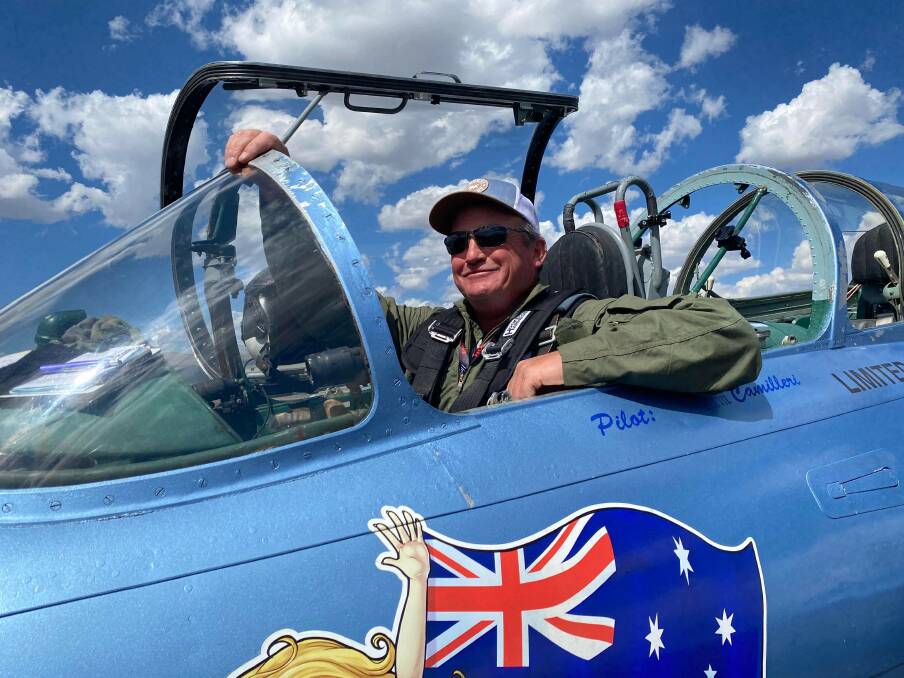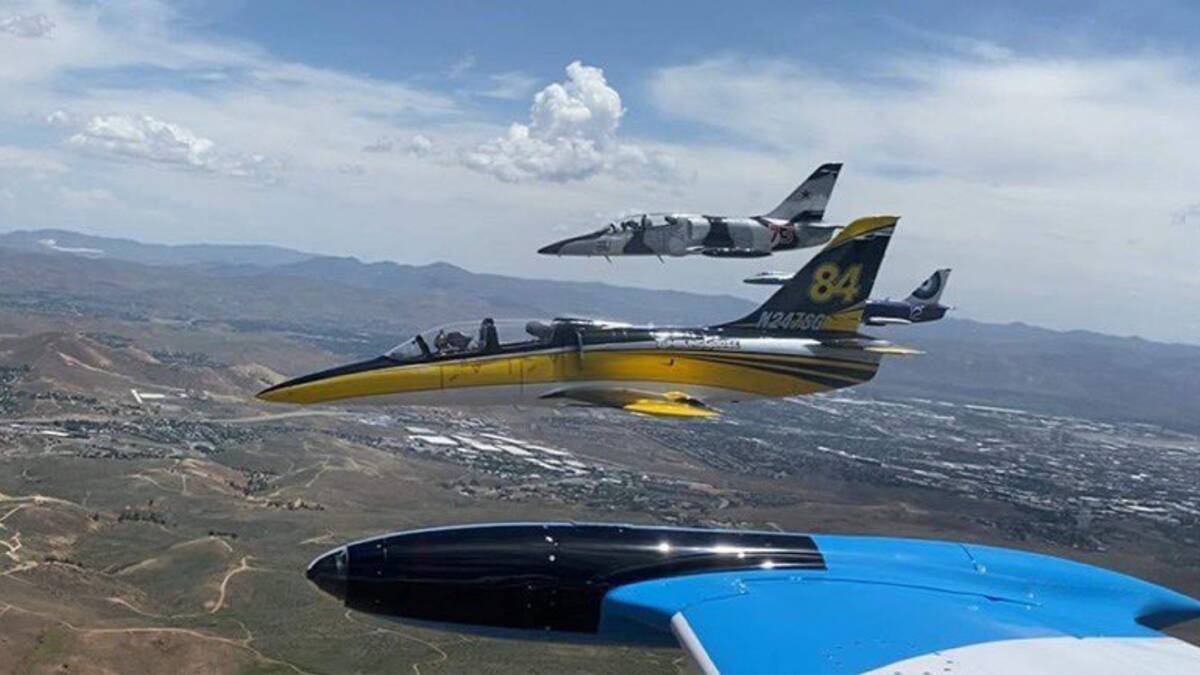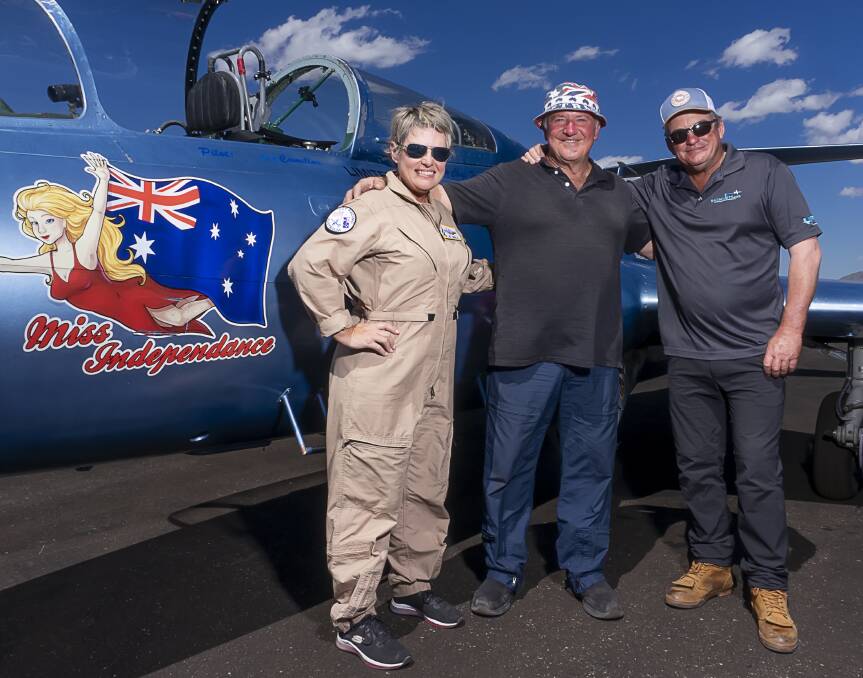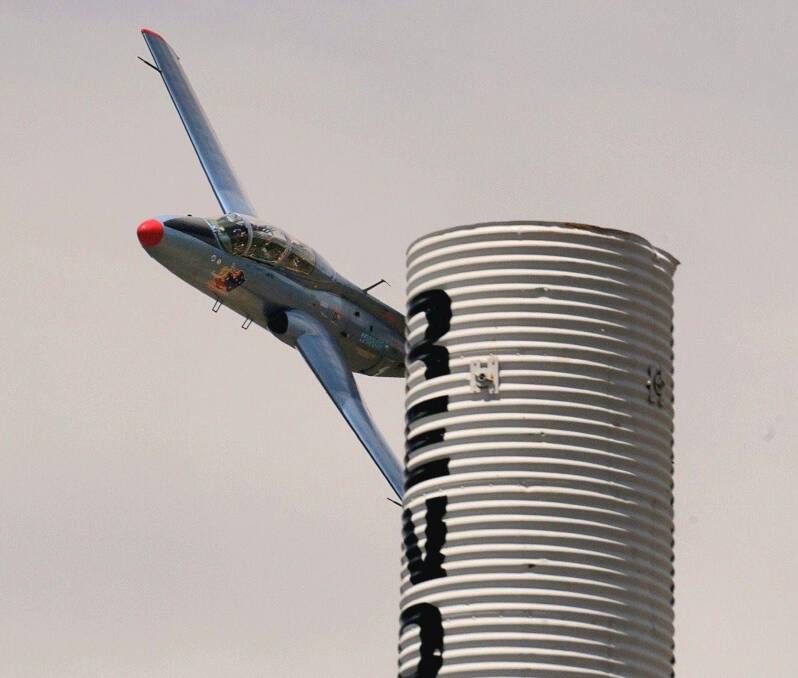
Flying 30 metres above the Nevada Desert at speeds of 650 kilometres an hour is not how most of George Ryan's neighbours at Einasleigh picture the fifth generation beef producer.
Subscribe now for unlimited access.
or signup to continue reading
It's hard to believe but George 'Rainman' Ryan received the accolade of Rookie of the Year at 54 years of age in September when, as part of the CCT Australian racing team, he took part in the US national championship air races at Reno, flying in the fast jet class.
"It was in front of a crowd of 120,000 people but when you come around belly up, doing speeds of up to 650 kph and there's upwards of six jets around you, you don't really notice the crowd," the Gulf cattleman said.
Explaining how he went from using a Cessna as a form of transport to get around Queensland's remote north west to flying warbirds in formation in international competition, George said it was something that had been burning away in him since he was a boy.

"Every kid wants to fly fast jets, but I thought you had to be superhuman," he said.
He learnt to fly conventional aircraft in 2007 after reading an article on the topic on a commercial flight to Brisbane to be with his eldest son, receiving treatment for leukaemia.
The family was subsequently invited to an air show in Townsville, thanks to Camp Quality, where the US Air Force Thunderbirds and their F-16 Fighting Falcons were the star attraction.
It was the comment from the squadron leader in the one-on-one time that followed that changed George's life.
"He told me, real life isn't a dress rehearsal," he said.
"I did my research and found ex-military jets for sale.
"It was at the peak of the global financial crisis - the US was selling all its toys and the Australian dollar was going up.
"I said, this is do-able."
He bought a 'smoking hot' Aero L-39 Albatros, the most widely used jet trainer in the world, dismantling it and shipping it to Innisfail.
As George says though, you can't step out of a Cessna straight into a fighter jet.
"It took a while to learn to fly it, and it took CASA a while to let me," he recalled, saying it was retired RAAF member Charlie Camilleri at Fastjet Adventure Flights at Bathurst, NSW who took him under his wing and gave him his jet-powered wings.

"He wanted to make it happen for me," George said.
"I had to learn about aerobatics, pressurisation, retractions, how a jet engine worked, to manage the speed and to deal with G forces.
"I flew that around for seven years, then Charlie and his wife Tam invited me to be on the team to race at Reno.
"I never dreamt I'd be there, and I didn't know if I'd make the standard."
Making the standard consisted proving his ability via a pylon racing safety course, conducted at Reno in June.
"You're expected to be able to fly in formation," George said.
"You've got experienced US Navy pilots in the back that take you through it.
"It was intense - at the end, when I did my check ride, I was mentally fried, but I passed and they invited me back to race in September."
Racing in the 'fastest motor sport in the world' consists of planes lining up in the air at 7000 feet then slingshotting around seven to 10 pylons - poles about 15m tall with drums mounted on top - for six laps of 13km each.
Judges watch to see that racing aircraft remain to the outside of the pylons and above the minimum altitude prescribed in the rules.

George believes his bush skills, used to orient himself while in the air in the vast spaces of north west Queensland, helped him win his rookie crown, saying that while other pilots were looking at maps, his attention to the detail in the landscape put him in the right place each time.
"I was picking out a coyote trail for example, instead of a big land feature," he said. "Instead of being 30m out I was right on track."
George and his wife Miranda own four cattle stations, three in the Etheridge Shire and one south of Hughenden, running 5000 head, mainly supplying the live export trade but also selling to backgrounders, and use a Cessna for property commuting.
"Cattle are definitely in my blood - flying is my hobby," George said.
However, knowing that the sport isn't something that can't be done half-heartedly, saying there's zero time for erratic behaviour, George's jet has relocated to Bathurst where's he been flying more hours to stay current.
"It's not something you can do every six months - if the numbers aren't at the top of your head, you don't fly the plane," he said.
He acknowledged the risk involved in the extreme sport, saying plenty of people had tried to talk him out of doing it.
"But every day of my life is dangerous, being a male in a rural industry - it's recognised as a dangerous profession," he argues. "I'm a boy from the bush but I hope I can help people realise there are things they can aspire to."
His wife Miranda says he's an example for many.
"He left school in Year 10 but he had a dream and made it happen," she said.


